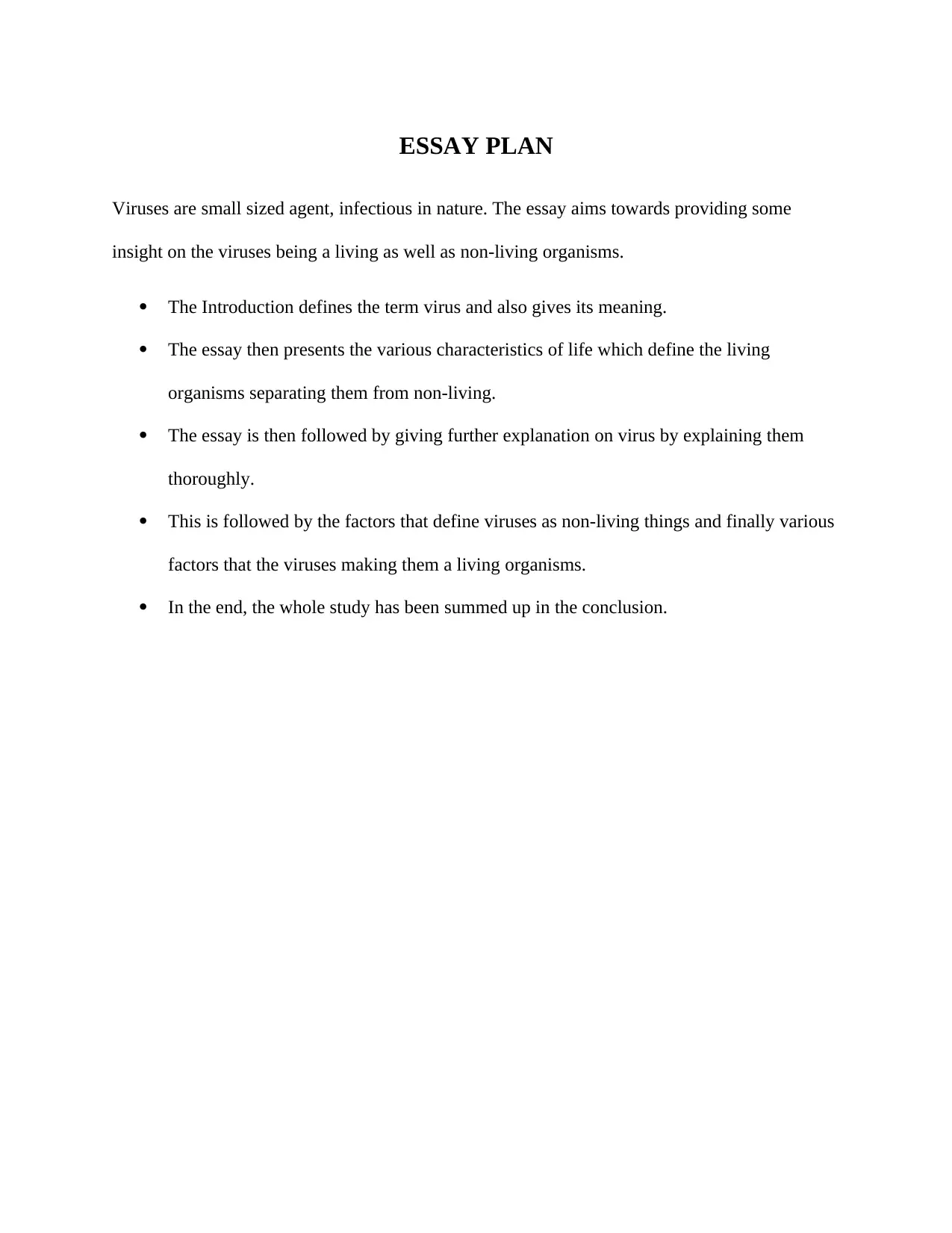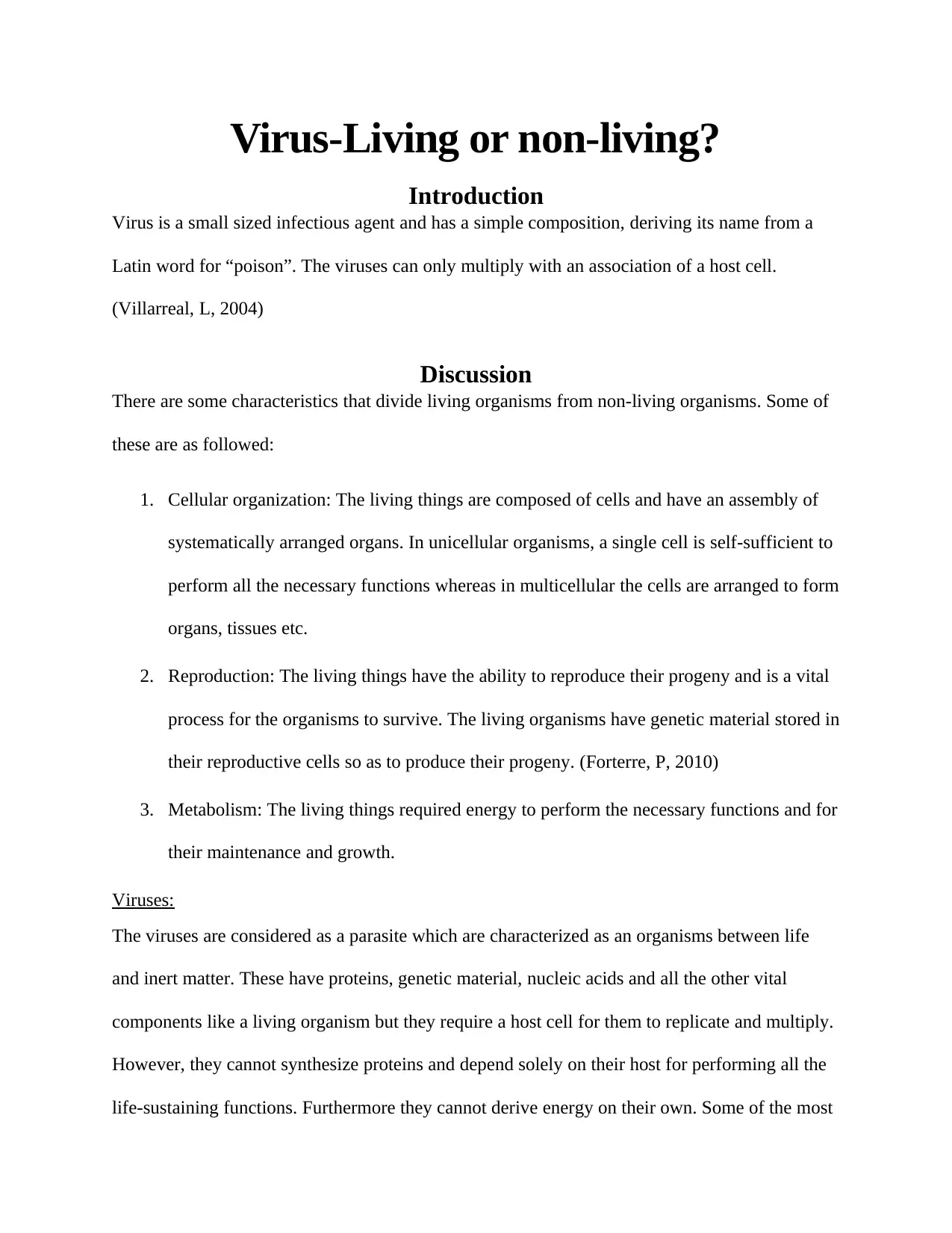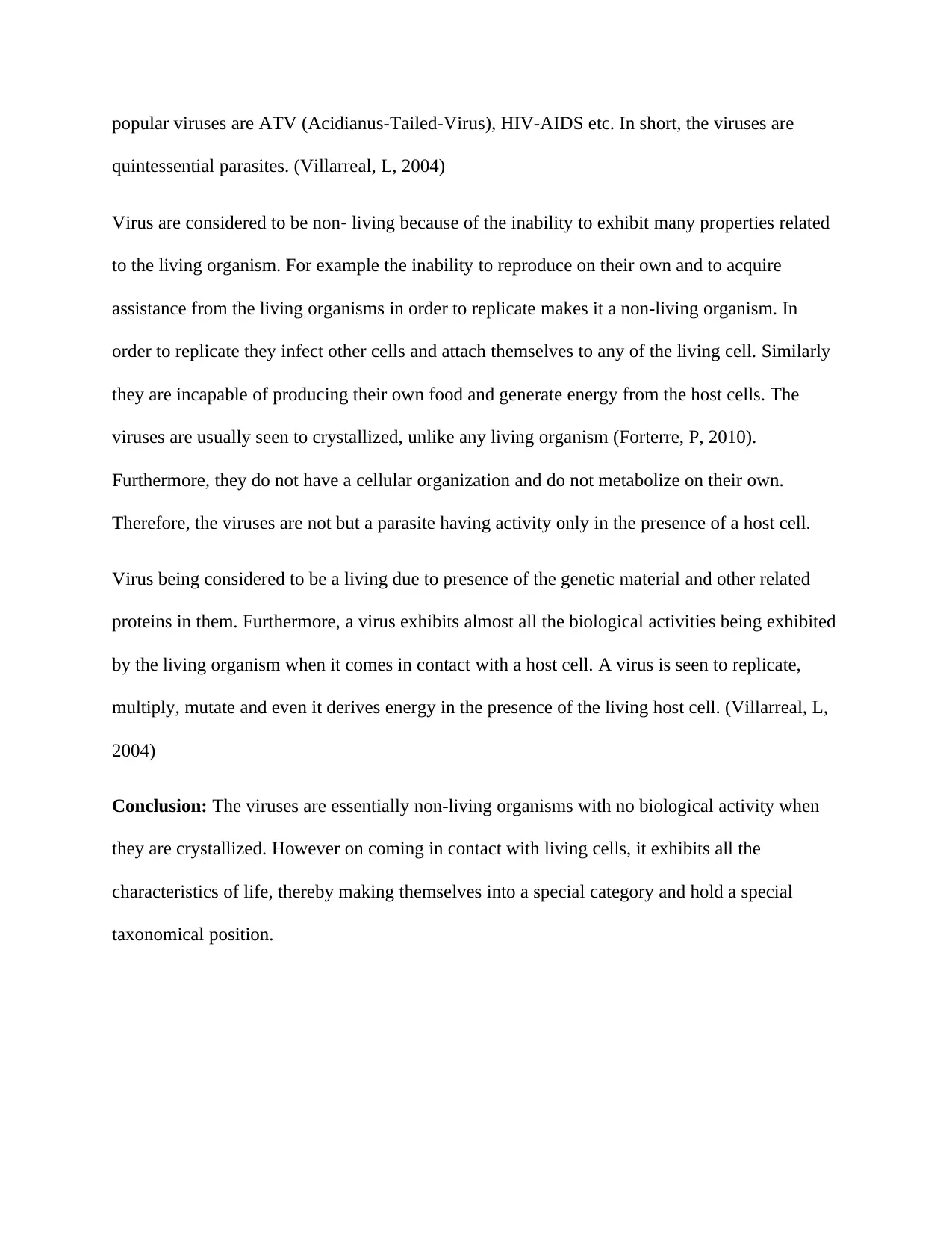Biology 101 Essay: The Living and Non-Living Nature of Viruses
VerifiedAdded on 2019/09/21
|4
|731
|44
Essay
AI Summary
This essay delves into the complex nature of viruses, exploring the ongoing debate of whether they should be classified as living or non-living organisms. The introduction defines viruses and their basic composition. The essay then contrasts the characteristics of living organisms, such as cellular organization, reproduction, and metabolism, with the characteristics of viruses. It discusses the parasitic nature of viruses, their dependence on host cells for replication, and their inability to independently generate energy or synthesize proteins. The essay highlights the factors that support the classification of viruses as non-living, such as their inability to reproduce independently and their tendency to crystallize. Conversely, it examines the arguments for considering viruses as living organisms, including the presence of genetic material, their ability to replicate, mutate, and derive energy within a host cell. The conclusion synthesizes these arguments, asserting that viruses occupy a unique taxonomic position, exhibiting life-like characteristics only when interacting with a host cell.
1 out of 4











![[object Object]](/_next/static/media/star-bottom.7253800d.svg)